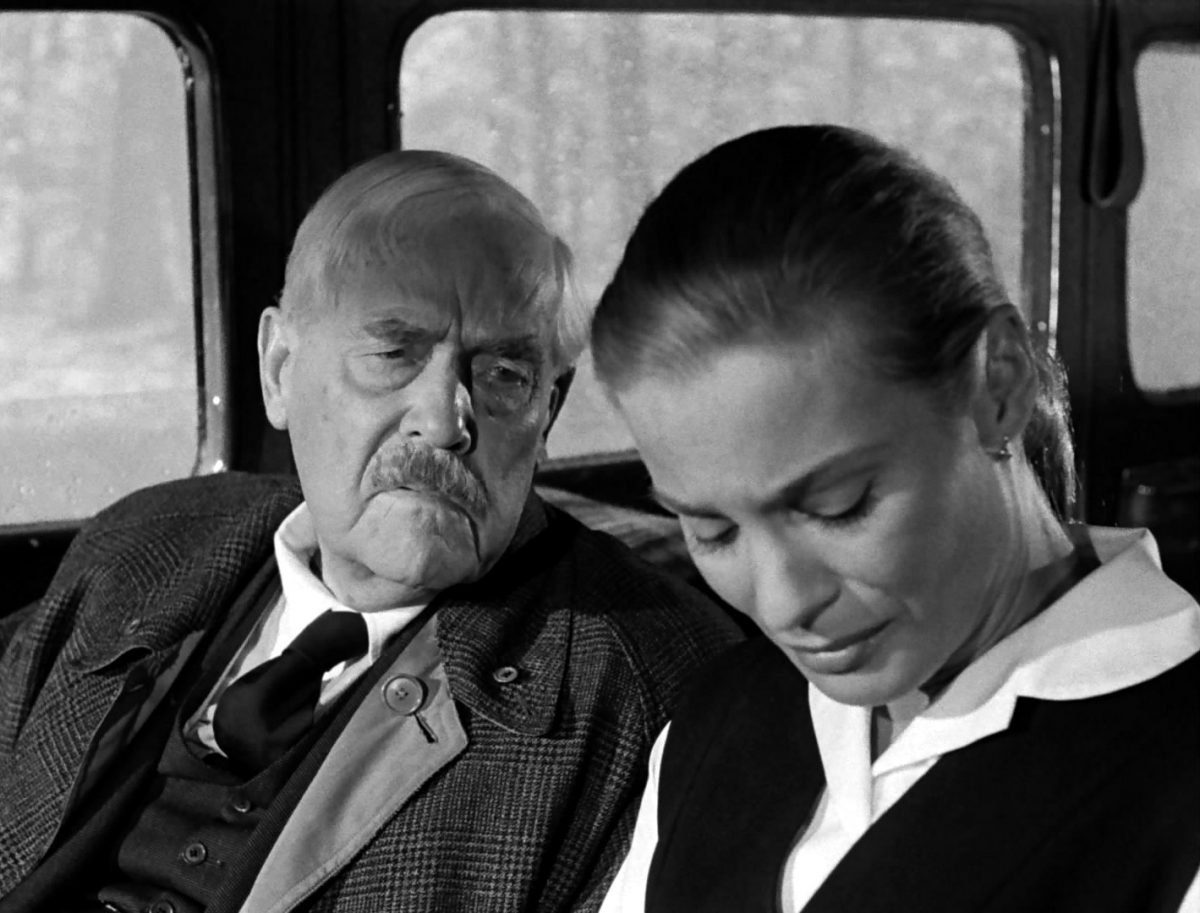Wild Strawberries

Smultronstället
Ingmar Bergman
Sweden – 1957

Screenplay: Ingmar Bergman
Cinematography: Gunnar Fischer
Production: Svensk Filmindustri
Language: Swedish, Latin
Duration: 91 min
Color: Black and White
Synopsis: Dr. Isak Borg, now 78 years old, is traveling by car to Lund to receive an honorary degree. He’s traveling with his daughter-in-law Marianne, married to his son Evald. Isak now lives a lonely life which, by his own admission, is partly his own fault, having consciously withdrawn from most social interaction. Along the way they stop at the family’s summer home where he spent time during the first twenty years of his life. It’s the place where the wild strawberries grow and reminds him of his beautiful cousin, Sara, to whom he was secretly engaged until she eloped with his irresponsible brother Sigfrid. They give rides to several people along the way, including a girl—also named Sara—and her two friends, followed by a married couple whose bickering almost runs them off the road. Borg’s reminiscences and disturbing dreams add to his melancholy as he questions the decisions he has made in his life.
Notes:
Like another one of Bergman’s road movies, The Seventh Seal (also released in 1957), Wild Strawberries features a protagonist grappling with an intense fear of death. The focus of these fears in Wild Strawberries, however, is very different. In The Seventh Seal, Antonius Block struggles with an obsessive need to find a meaning to existence, which for him necessitates the presence of a divine and benevolent power. He fears death only because he does not have the assurance that such a power exists. Wild Strawberries offers us a more humanistic view of life, where the individual creates their own meaning. This view is not without its own problems: for Borg, the overriding fear is that in death his life will be judged, and be found lacking. Ideas of Swedenborgianism, particularly those of judgment and the afterlife, are introduced almost immediately in the opening dream sequence, a five-minute scene that has become one of the most famous of Bergman’s career. The lush strains of Erik Nordgren’s score, still lingering from the credits, fade to absolute silence punctuated by a heartbeat, and Borg finds himself alone in a deserted street. Borg is then confronted by his mirror image, rising from a coffin to pull him in. This theme builds to a crescendo until Borg’s final “humiliating” dream, where he is forced to account for his life in front of a jury of his friends, family, and acquaintances, all of whom stare at him with unblinking and unforgiving expressions. Finally, his childhood sweetheart forces him to look at his own reflection in a mirror, where he is unable to avoid his own gaze. As with most of Bergman’s films, Wild Strawberries contains many autobiographical elements. Like Borg, Bergman has often said that he considers himself much more successful at his profession than as a human being; and while Bergman claims to have exorcised his fear of death through The Seventh Seal, he demonstrates a continued affinity with Isak Borg’s fear of judgment. The restored film version has been drastically improved from previous releases, after an excellent job of removing all traces of scratches and dirt; the sharper contrasts are especially effective in the opening dream sequence, where the palate of grays that colors the pre-credit sequence shifts abruptly to a scene dominated by harsh, piercing whites. In the absence of tape hiss, Erik Nordgren’s beautifully understated score plays an excellent supporting role.
Notes based on Grafius, Brandon. “Review of Wild Strawberries.” Cineaste 27.4 (Fall 2002): 51-52.


